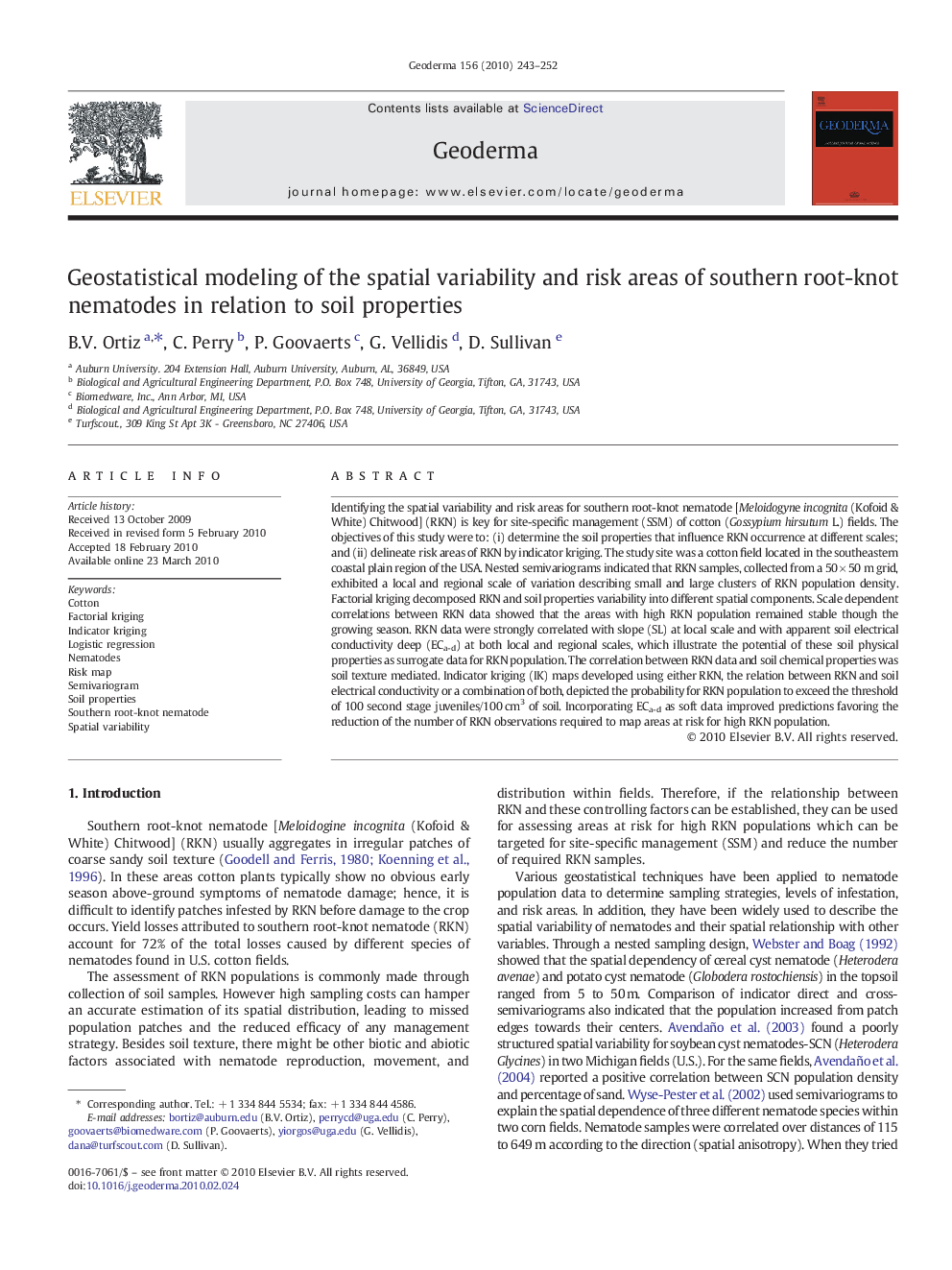| کد مقاله | کد نشریه | سال انتشار | مقاله انگلیسی | نسخه تمام متن |
|---|---|---|---|---|
| 4574467 | 1629521 | 2010 | 10 صفحه PDF | دانلود رایگان |

Identifying the spatial variability and risk areas for southern root-knot nematode [Meloidogyne incognita (Kofoid & White) Chitwood] (RKN) is key for site-specific management (SSM) of cotton (Gossypium hirsutum L.) fields. The objectives of this study were to: (i) determine the soil properties that influence RKN occurrence at different scales; and (ii) delineate risk areas of RKN by indicator kriging. The study site was a cotton field located in the southeastern coastal plain region of the USA. Nested semivariograms indicated that RKN samples, collected from a 50 × 50 m grid, exhibited a local and regional scale of variation describing small and large clusters of RKN population density. Factorial kriging decomposed RKN and soil properties variability into different spatial components. Scale dependent correlations between RKN data showed that the areas with high RKN population remained stable though the growing season. RKN data were strongly correlated with slope (SL) at local scale and with apparent soil electrical conductivity deep (ECa-d) at both local and regional scales, which illustrate the potential of these soil physical properties as surrogate data for RKN population. The correlation between RKN data and soil chemical properties was soil texture mediated. Indicator kriging (IK) maps developed using either RKN, the relation between RKN and soil electrical conductivity or a combination of both, depicted the probability for RKN population to exceed the threshold of 100 second stage juveniles/100 cm3 of soil. Incorporating ECa-d as soft data improved predictions favoring the reduction of the number of RKN observations required to map areas at risk for high RKN population.
Journal: Geoderma - Volume 156, Issues 3–4, 15 May 2010, Pages 243–252